What are Wildlife Killing Contests?
Wildlife Killing Contests (WKC) are privately run competitions aimed at killing as many predatory species as possible. Typically, coyotes, foxes, and bobcats are targeted. Competitors compete to kill the most, smallest, or largest predator in addition to other prize areas. While this may seem like a normal hunting competition, it is not. These groups know what they do is unsavory and is not ‘real’ hunting. Participants are required to keep killed predators covered and are not allowed to post anything related to the competition on social media. At the end of the day, the furs or other parts of the animal are rarely used, but rather discarded as the prizes are all that competitors are looking to get out of the event. Wildlife held in the public trust is killed so others can gain financially, sometimes winning tens of thousands of dollars.
Wildlife Killing Contests in Wyoming
Wyoming is home to several of these contests including the ‘Wyoming Best of the Best’ and several other privately run contests. The Wyoming Best of the Best is a circuit of contests that draws people from around the region to come to Wyoming to primarily kill coyotes and foxes. Participants pay an entrance fee and then build points in monthly events that span from December through February. There is a state championship held in early November in Rock Springs. Locations of the qualifying events are in Kemmerer, Casper, Cheyenne, Lovell, Riverton, Rock Springs, and Newcastle. So no matter where you live across the state, there’s likely a WKC happening in your community.
Probably one of the most egregious factors about wildlife killing contests in Wyoming is that wolves can be killed during the event. Wolves are listed as trophy game animals in the northwest corner of the state where there is a hunting season and limits on the number of animals that can be killed. However, they are considered a predator in the remaining 85% of the state which means they can be killed at any time by any means with no oversight or hunting tag needed. Other animals listed as predators are coyotes, red fox, jackrabbits, porcupines, raccoons, skunks, and stray cats. These animals are excluded from ethical guidelines that govern the hunting of other species like elk and deer. In fact, they do not even fall under the Wyoming Game and Fish Department but are managed by the Wyoming Department of Agriculture.
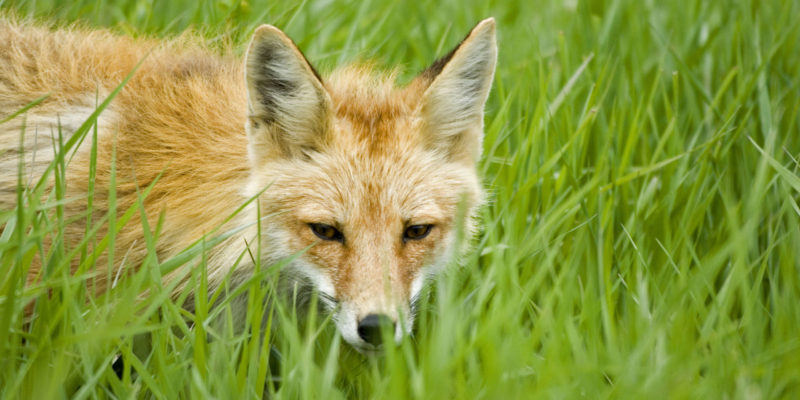
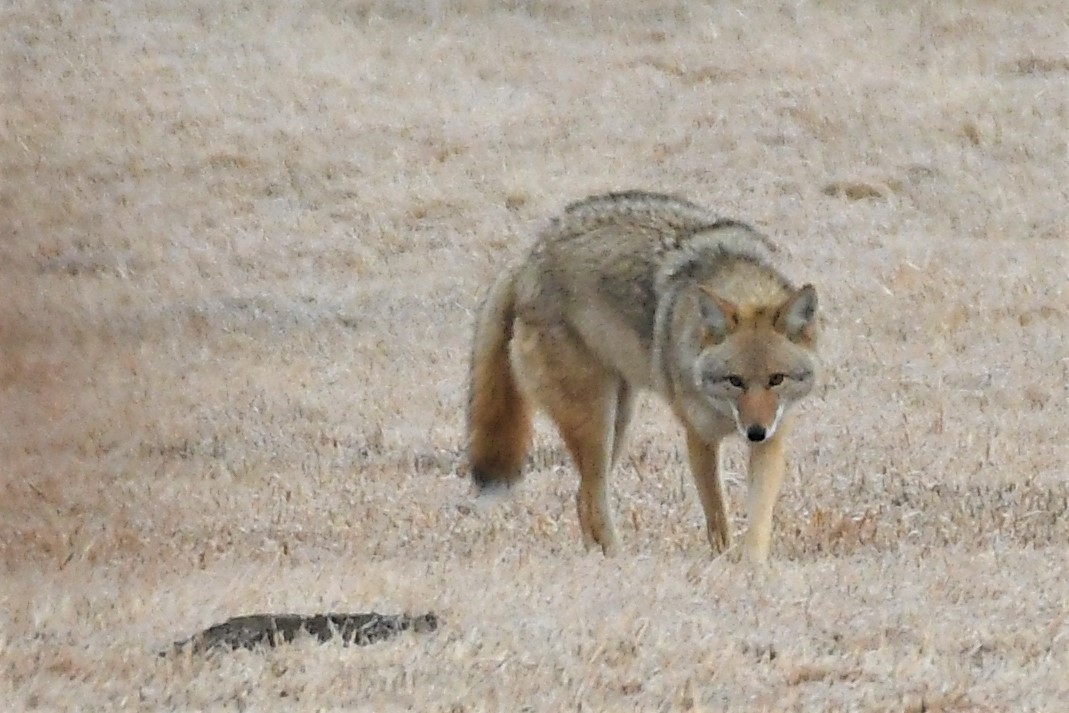
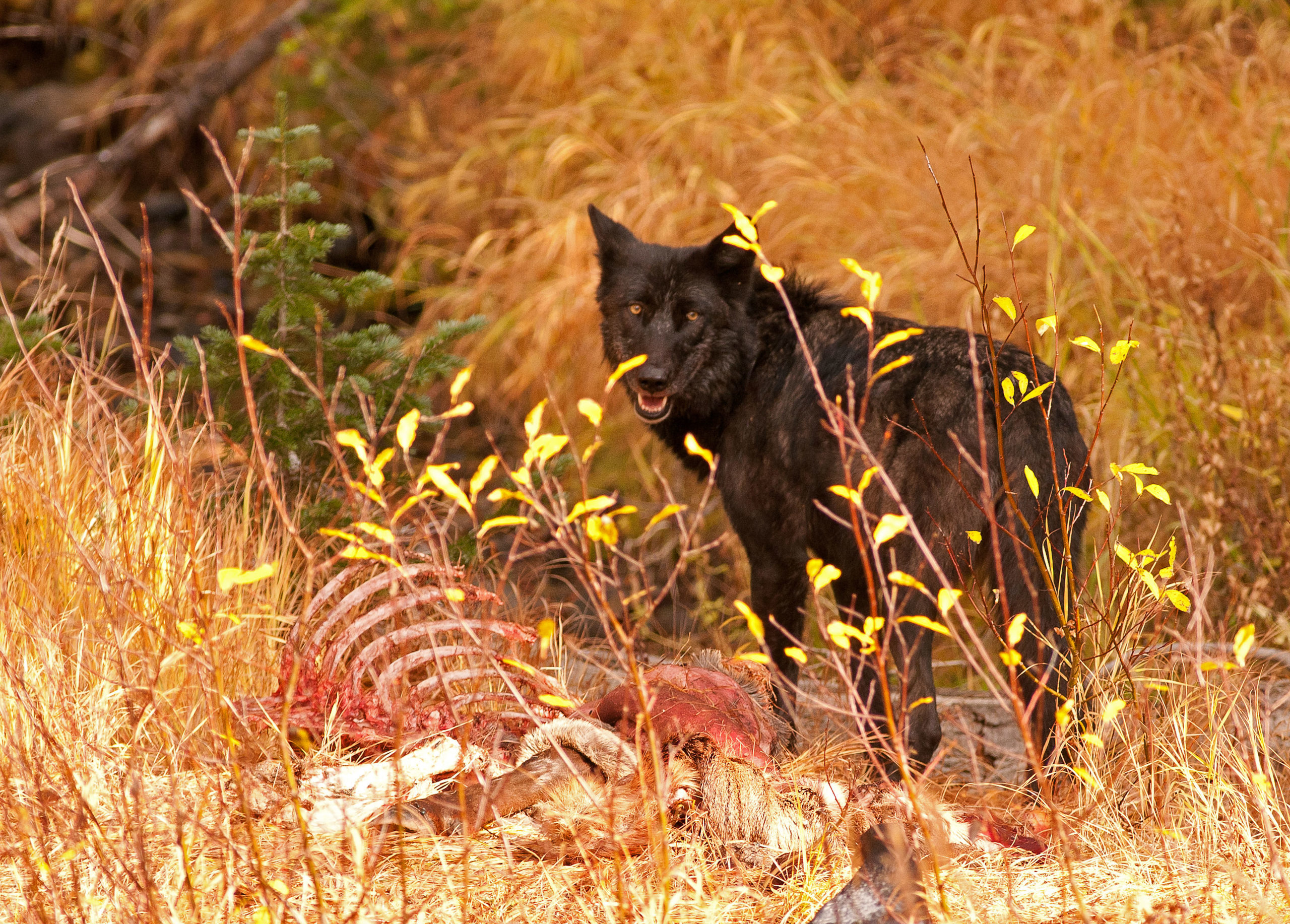
HOW YOU CAN HELP
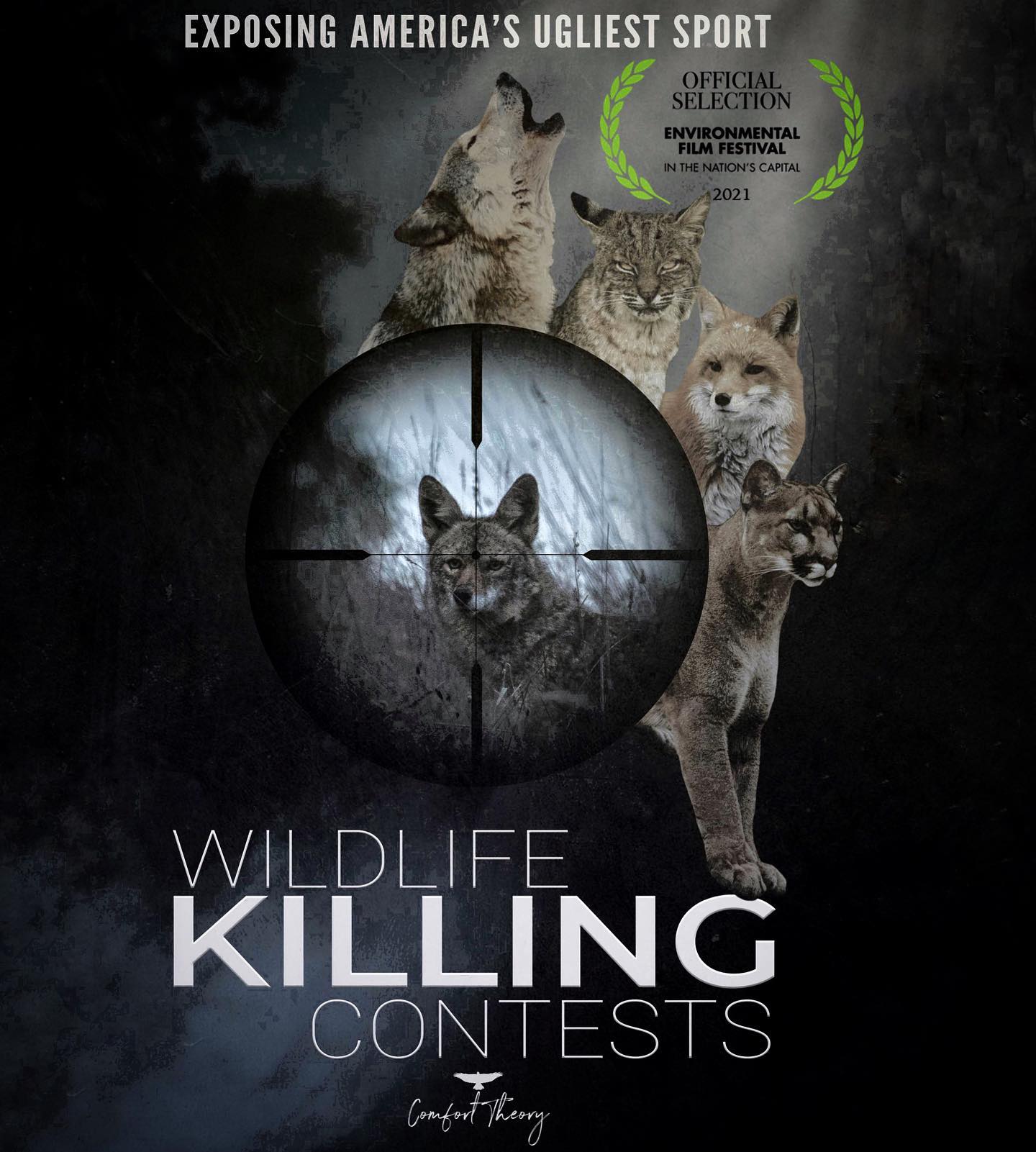
Myths of Wildlife Killing Contests
Myth: Killing contests reduce livestock conflicts.
Myth: Killing contests keep people and pets safe from attacks.
Myth: Killing contests are a useful tool for wildlife management.
Myth: Wildlife killing contests save deer and elk.
Not a New Issue
As these news articles show, wildlife killing contests have been active in Wyoming since at least the 1990s and were probably prevalent before that, but so is the outrage over them. Conservationists have been concerned about the effects to the environment and unethical treatment of our wildlife at contests for years.
In a state where we can’t even get a law to ban running over coyotes and wolves with snowmobiles, we have to look to leadership from the federal government as pleas to end these events are ignored at the state level. The Wyoming Department of Agriculture has authority over coyotes, wolves in most of the state, and other predators but is unwilling to consider any action against wildlife killing contests. The Wyoming Game and Fish Department claims they don’t have the authority to manage these animals and is also unwilling to take any action. However, with more and more states enacting bans on WKCs, a federal law is likely to follow. It can’t come a moment too soon for all the coyotes, foxes, bobcats, wolves, and dependent young that are gunned down or left orphaned to die.
We thank those advocates who have been fighting against this issue for decades and brought it to the light of day. We are more than happy to carry the torch and to continue advocating for these animals that have a right to live and contribute to healthy, functioning ecosystems.
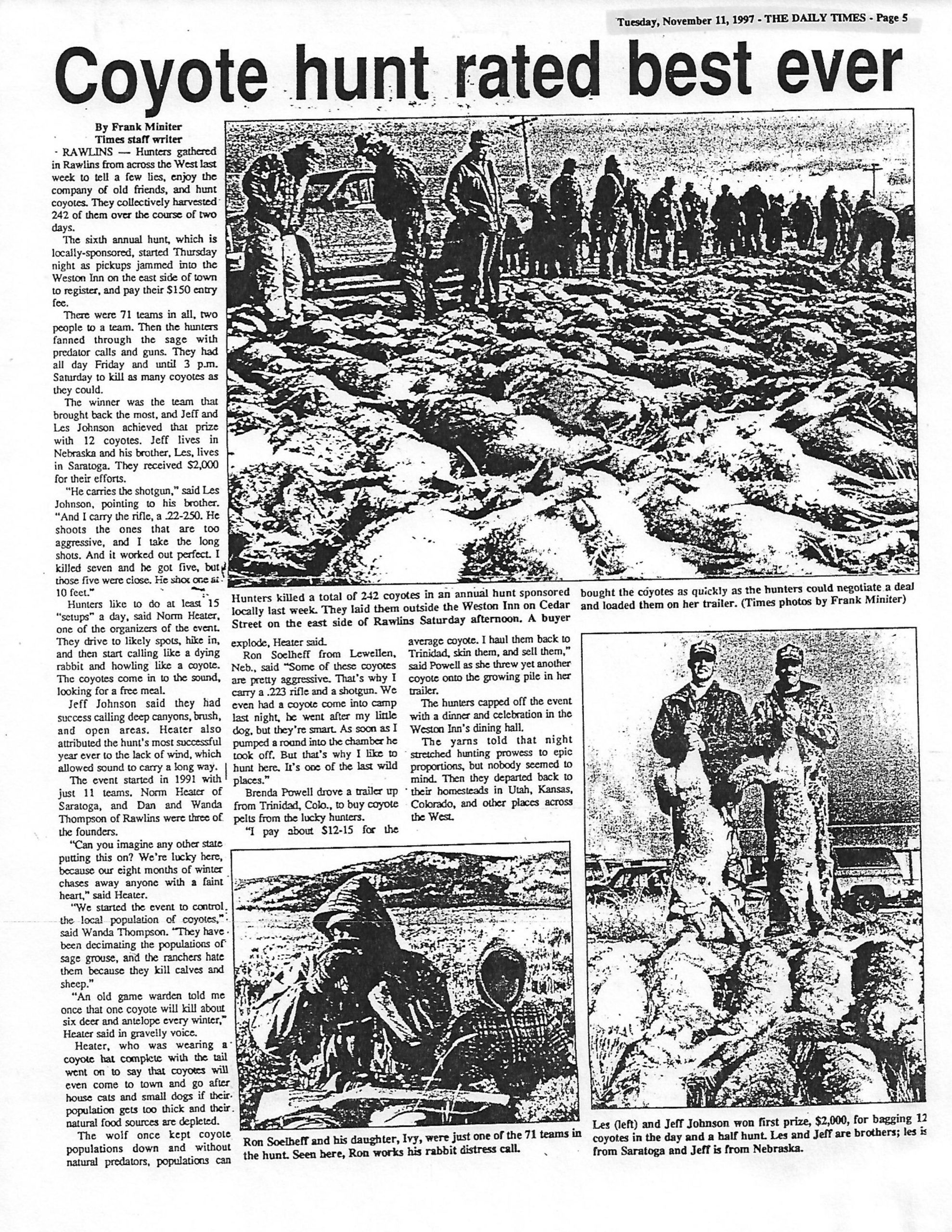
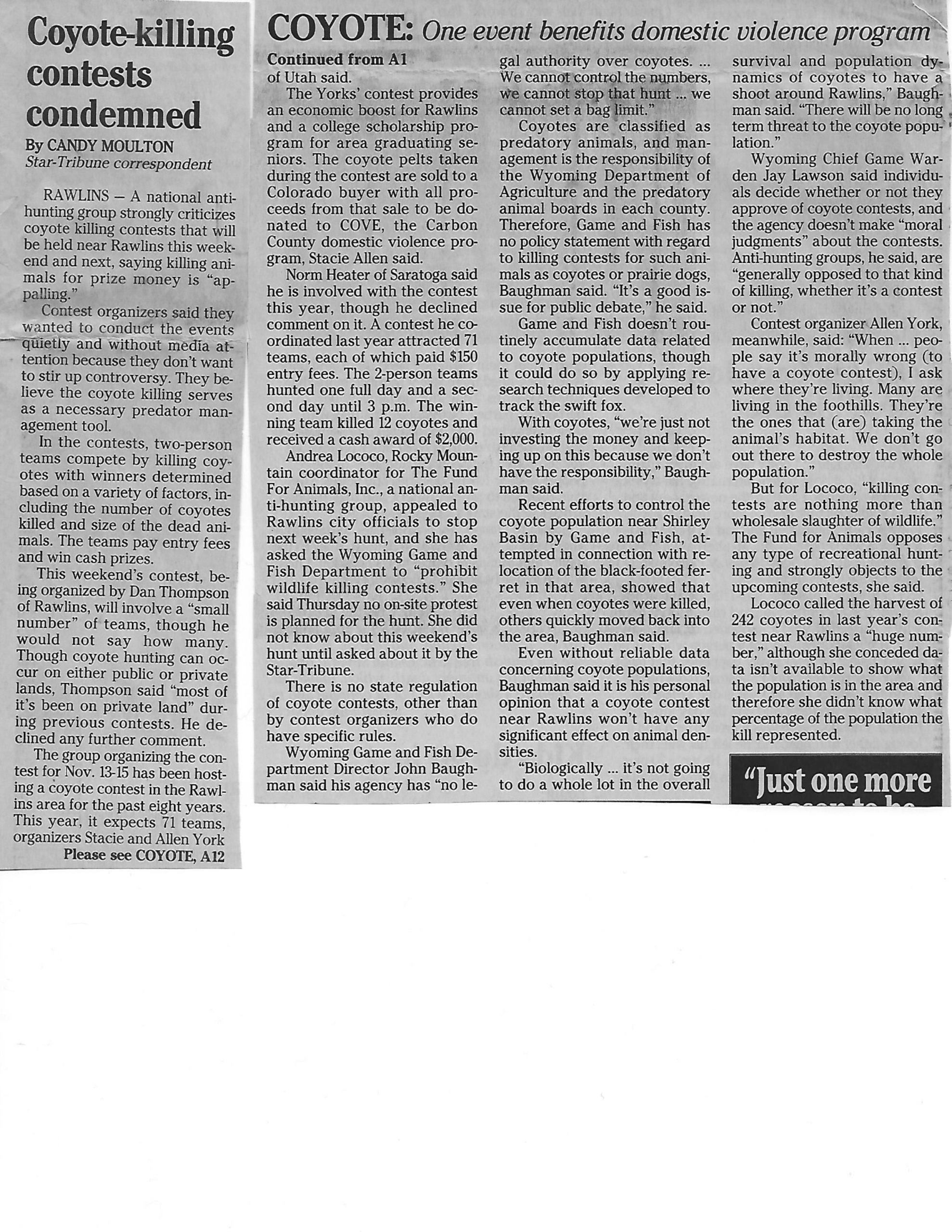
Where are Wildlife Killing Contests Legal
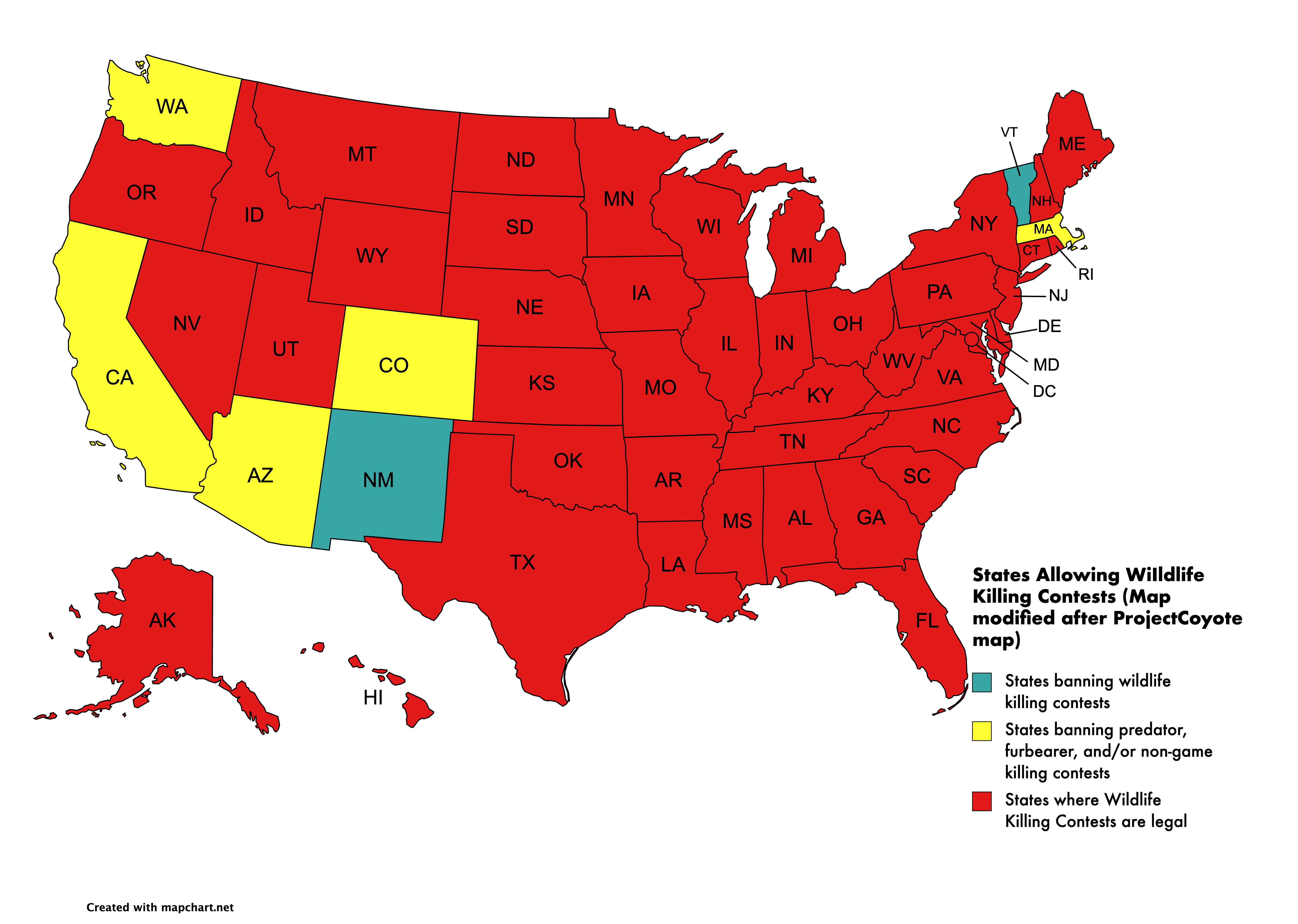
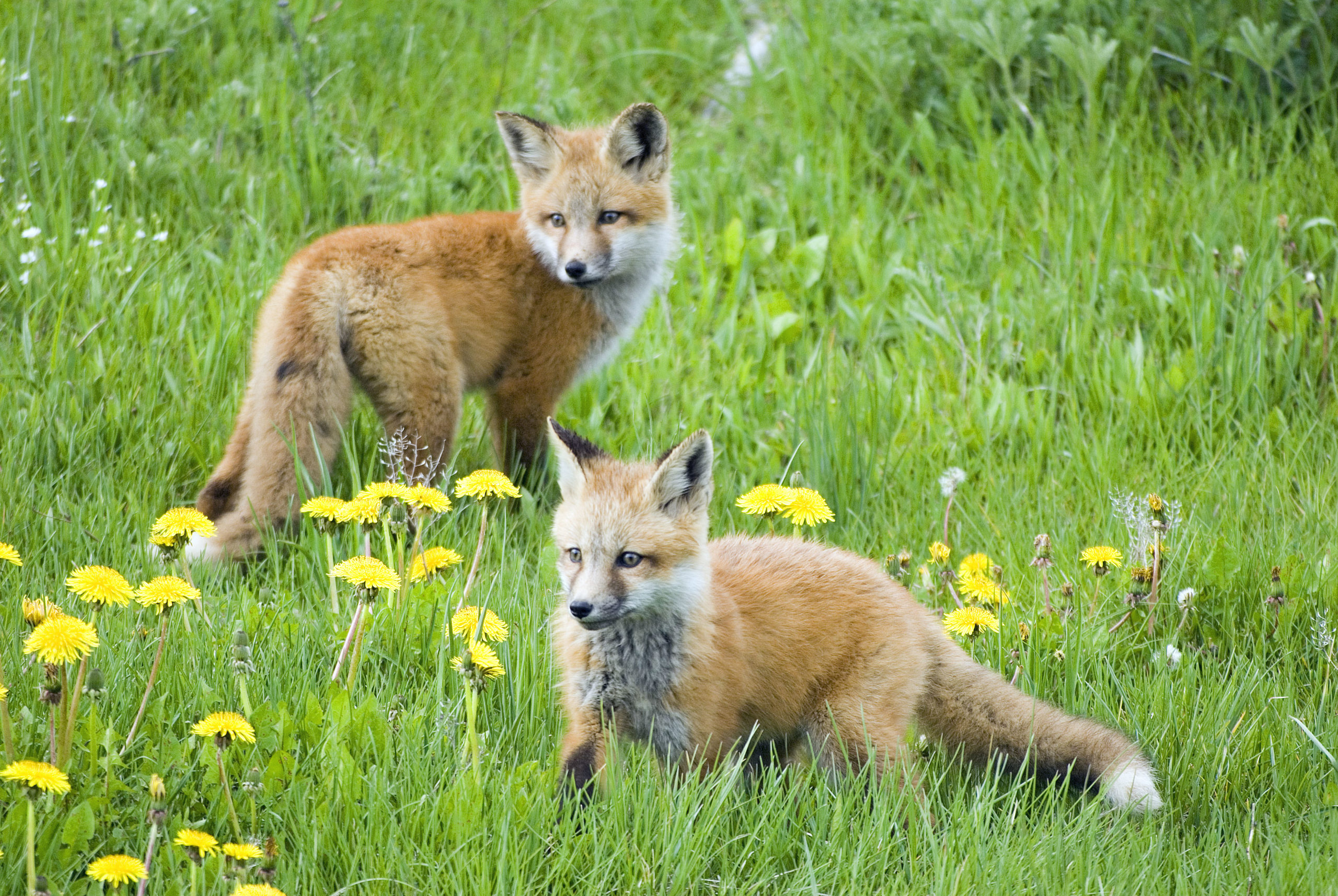
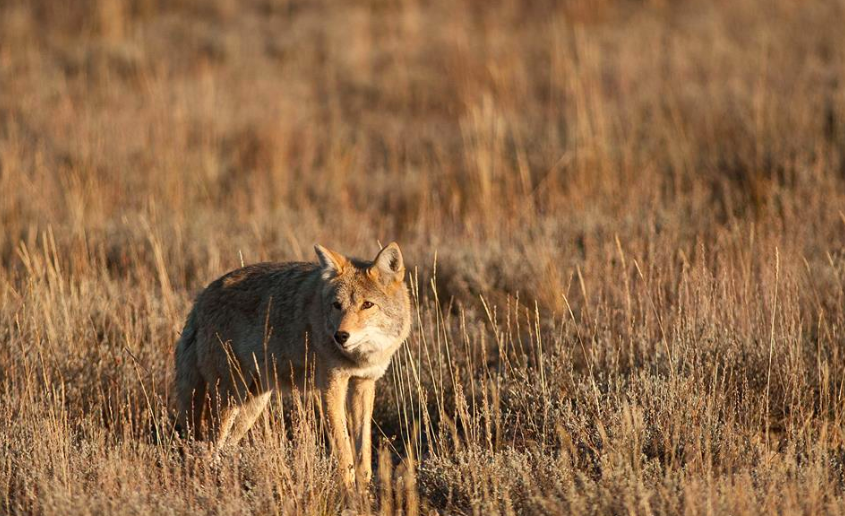
Resources
Factsheets
Facts about wildlife killing contests: Factsheet
End Wildlife Killing Contests Factsheet
Project Coyote Science Advisory Board Coyote Facts
WILDLIFE KILLING CONTESTS: Contrary to 21st Century, Science-Based Wildlife Management: link
Articles
Investigation finds online wildlife killing contests are thriving during pandemic – The Humane Society Legislative Fund (2021): link
Letter to the editor: Coyote killing contests should be banned – RocketMiner.com (2021): link
The controversy over wildlife killing contests – The Hill (2021): link
Coyote Carnage: The Gruesome Truth about Wildlife Killing Contests – YaleEnvironment360 (2018): link
BLM Urged to Shut Down Illegal Coyote Killing-contests in Wyoming – Wyoming Untrapped (2017): link
Bixby: Wildlife killing contests should be outlawed in the West – Denver Post (2015): link
Literature
Hunting Contests in New York State (2020): link
WILDLIFE CATEGORIZED as “VERMIN”: Analysis of the Wildlife Management Practices in the USA and Its Ecological Implications on Natural Ecosystems (2020): link
Aligning Coyote and Human Welfare (2020): link
More resources: WWA Resources, Project Coyote, National Coalition to End Wildlife Killing Contests
